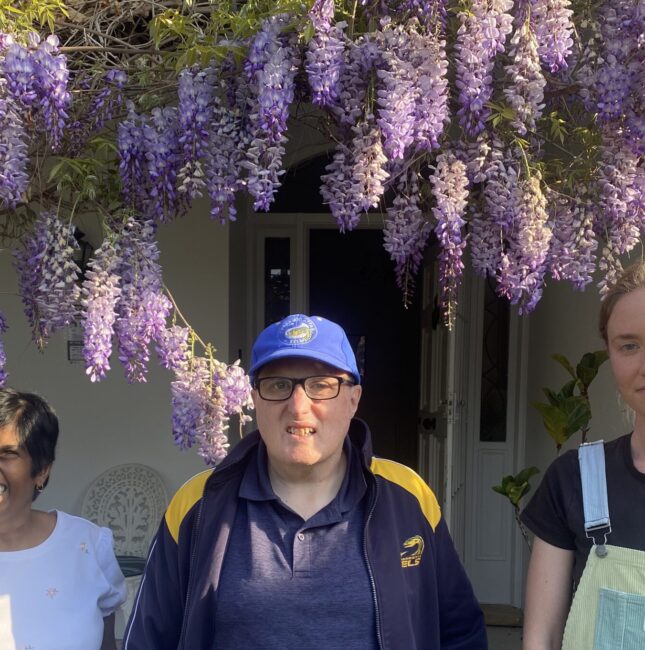Common foster care myths
September 3, 2020
There are approximately 46,000 children in Australia who cannot live at home with their families. Some of these children get placed with a relative, but a good percentage require foster care.
This is a callout for more carers, for more families and individuals that can provide the love, care, stability, and sense of belonging that children need to thrive.
Becoming a foster carer is not an easy decision, and many Australians are unclear on what’s required and what’s involved. As part of Foster Care Week (commencing 10 September), we’re debunking some of the most common myths surrounding foster care.
According to one study by the University of Sydney, 89% of Australians believe that they have an understanding of what foster care is. Despite this, many have preconceived notions about the processes involved and the children and young people in need.
Three of the most common foster care myths are:
- Being a foster carer means adopting a child or committing to care full-time.
- Children in foster care are disruptive and prone to misbehaviour.
- Only established households with children of their own can become foster families.
It’s time to debunk these myths and show that becoming a foster carer is a very real option for hundreds of thousands of Aussies.
Myth 1: I have to commit to full-time care
Foster care is not the same as adoption. It also doesn’t necessarily mean you must commit to full-time or long-term care. There are many different types of foster care that you can help with including:
- Emergency care – this ensures children and young people in immediate danger get the support they need when they need it. These types of placements can occur at any time, including after hours, on weekends, and at short notice.
- Short-term and medium-term care – sometimes children need a safe place to live while their parents make arrangements, work, or change their lifestyle. The goal of short and medium-term care is to reunite foster children with their parents or family within two years.
- Long-term care – placements for more than two years occur when children cannot be returned to their parents. Sometimes, foster carers may become legal guardians or adopt children in their care.
- Respite care – if you cannot commit to full-time care, respite is a good option. As a respite carer, your home becomes a safe space for children on an occasional basis, such as on weekends or during the school holidays.
Myth 2: The children in foster care are disruptive and difficult to handle
Participants in the same study by the University of Sydney had concerns surrounding problematic behaviour, especially among children over 9 years. They assumed that specialised experience would be required by carers to adequately respond to disruptive children.
While it is true that some children in foster care have experienced trauma, support is available to carers to help them overcome these challenges. All foster carers are allocated a Case Manager, who can then provide practical advice. Your Case Manager will connect you to psychologists, speech pathologists, and other healthcare professionals as needed. You can also access training on relevant topics such as therapeutic parenting and understanding trauma.
Myth 3: Only established, ‘conventional’ families can become foster carers
Single individuals, same-sex couples and unmarried partners without children can all become carers. Foster carers come from all walks of life. Busy professionals only available on weekends, empty nesters, and married couples with children of their own can all finds ways to support children in need.
CatholicCare Diocese of Broken Bay offers a foster care program. You can check your eligibility here www.catholiccaredbb.org.au/foster-care-assessment-tool/. Or use this checklist to get a general idea about your suitability for foster care:
- You need to be between 25 and under 70 years of age.
- Marital status is not a requirement. But, if you are married or a de-facto couple, you must have been living together for at least 2 years.
- Health wellbeing is a factor, as well as infertility issues.
- You must have the financial capability to take on a child.
- Safety and accommodation requirements in the home must be met.
The gift of support and stability cannot be underestimated, yet we are experiencing a serious undersupply of foster families. If you can help in any way, there’s no better time to take the leap and start your journey.
Make a difference in a child’s life today! Call (02) 9481 2600 or visit www.fostering.org.au to find out more. If you’re curious, feel free to call for a chat – no obligation. It’s a big decision – we understand there are lots of questions and we are happy to walk you through the process.
More news stories like this one
Mark has greater control
It's been a year of change and growth for Mark, who is a proud resident of our Supported Independent Living house in Wahroonga. Upon being asked what he most enjoys about living at Kokoda House, Mark says, “everything!”
Read MoreLet’s talk about invisible disabilities
When you think of the word, ‘disability’ what do you see? Perhaps you envision someone in a wheelchair, or a person walking with a cane. The reality is that for 90% of people living with a disability in Australia, their disability is invisible.
Read MoreMediation gives Amanda & David breathing space
When Amanda first contacted CatholicCare for help with property mediation, her life was nothing short of chaotic. “You name it, it had happened,” says Family Dispute Resolution Practitioner Melanie.
Read More


